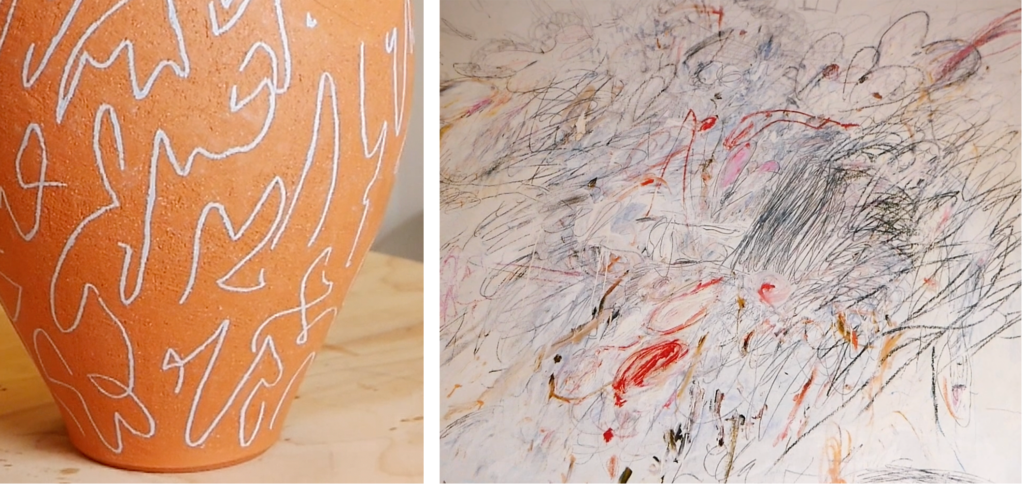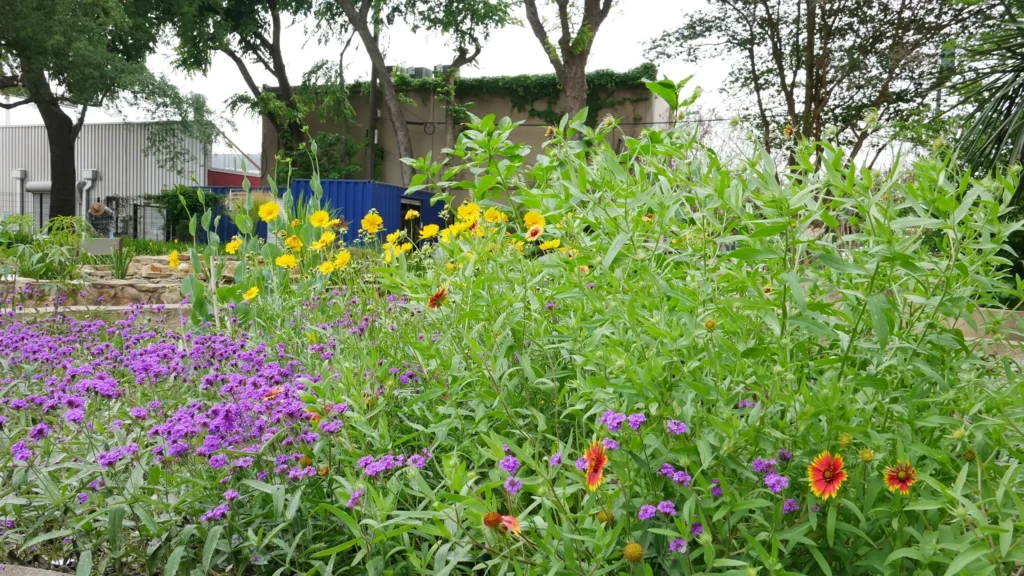“Open Door Interviews” is an informal interview series developed in collaboration with HCCC and social media intern James Pickens, intended to give insight into our resident artists’ creative process. You can watch the full interview by clicking on the embedded video below:
This past February, I joined Rebekah Sweda in her studio to learn about her creative process. During our conversation, I watched her work while we went back and forth between the kiln and her studio. In that time, we covered topics spanning her influences, inspirations, and experiences at HCCC. Our conversion began with a brief introduction to her work, where she guided me through her artistic journey thus far.
The conversation that follows has been edited for length and clarity.
James Pickens: How long have you been an artist, and when did you start working with ceramics?
Rebekah Sweda: I’ve been doing ceramics professionally for about four years. I’ve been building my ceramics skills for about eight years, but haven’t been doing ceramics professionally for too long.
JP: What drew you to ceramics?
RS: I have a background in STEM, so I have a chemistry degree, and I’d always done art all my life. And I really, really loved that ceramics is this combination of art – like creativity and chemistry combined together.
JP: How would you describe your art?
RS: I’d say what I work on tends to be a either response or likeness to traditional Greco-Roman work, with a good amount of playfulness in color and sculpture.

As Rebekah described how she combines Greco-Roman influence with abstract expressionism, I became curious about her inspirations, and how she uses these elements to create vessels that contain her signature cutout and scribble designs.
JP: Where do you look for inspiration?
SW: Anytime that I go to a museum, or really am living life, and I see a vase or a piece that I love, I pretty much always take a photo of it and draw it in my sketchbook so I can see what aspects of it that I love. And I bring it back, and I try to bring it into more sketches of more pieces that I’m gonna make down the line.
JP: Are there any particular artists that influenced you?
RS: I grew up loving abstract expressionism. It’s a big part of my history growing up in art, so I take a lot of influences from abstract expressionists that I love. The one that’s influenced me probably the most over my making career is Clyfford Still. I really appreciate and love his way of using paint as not just color, but also substance and medium, and using canvas as a way of making the pieces really stand out, and really beautiful. His history in painting in general is fantastic. The artist that influenced me the most in Houston is going to be Cy Twombly. I found [that] out – coming here and getting to see Cy Twombly at the Menil has been so fantastic and beautiful, the lighting is gorgeous. And then I bought a book about his life after seeing the exhibition, and found out that he spent a lot of his making career in Italy.
Rebekah’s scribble designs were influenced by her love for the work of abstract expressionist Cy Twombly, who often used a similar technique. She notes that the use of cutouts in her work are like windows, which juxtapose the ultra-manicured nature of shaped and thrown pottery. This occurs because the cutout shows the contrast between what Rebekah molds the medium into on the outside, and what the clay makes of itself on the inside.

Right: Detail of the cover of Cy Twombly: Making Past Present, photographed in Rebekah’s Studio
Another fact Rebakah shared with me is that rather than using glazes or paints she uses pigments to color the clay, and an inlay technique to embed her design into each piece. Interestingly, she only began doing this technique after teaching it in a college course, and deciding to use it for herself. From here, our conversation changed course and we focused on what media she takes in when working on a new piece.
JP: Is media a part of your creation process?
RS: When it comes to pop culture and media, I love it. I love to consume it very much, and so much more so in the sense that there’s been this movement within media of learning how to express emotions again, and doing it in a very safe way where people [would] usually have, like, explosions. I came from a background that was all explosions in my household. So, the conversations of people talking about how to express emotion in a safe and honest way while not denying yourself has been like a really big influence, though I know it’s not pop culture. It has been part of the culture that I’ve been listening to and hearing that has influenced my art the most. I think of one part of the emotions that I think of, with the mark making, is letting go when I’m making.
JP: What media do you consume while working? For instance, what music do you listen to?
RS: [laughs] It’s sort of something that I’ve always wanted to hide a little bit, because I feel like people don’t take people who play video games very seriously. I consume [them] really all the time! And so, a lot of [what] I do while I’m making is actually listen to other people play video games. Things that I really enjoy listening to while I’m working, one is an album called Plantasia (1976), which are songs that were made either based on, or for, different plants. It’s really grounding and lovely. I’ve been listening to a lot of Remy Wolf, really enjoying her wonderful sort of rebellion in her music. And then I’m listening to video game soundtracks. I pretty much always listen to Mario Galaxy, it has really great theatrical pieces. And then, Zelda 64 has the best sounds, It’s great. It’s very nostalgic and wonderful.
To conclude our conversation, I asked Rebekah to reflect on changes she has seen in her art, in addition to which sentiments she’ll take with her following her residency at HCCC.
JP: How has your work developed and changed over time?
RS: I’ve been trying to move my work into the direction of trying to celebrate community. I used to just put loneliness into my pieces, and now I have much more happiness in my life, and I’m trying to see how that reflects in the pieces. I think the residencies have been pinpoints in that reflection. So, the residencies that I’ve done before were really isolating. I never talked to anybody. I never worked with anybody. And I was by myself all the time. And so coming [to HCCC], realizing what community can be, and getting to celebrate that while I’m here has been so healing for me.
JP: What can you take away from your experience here at HCCC?
RS: I think, for me, HCCC is… just a really wonderful healing time for me. So what I’m taking away from it is a re-affirmation of artists and art communities, and people’s engagement in art. I think beforehand I just wasn’t having any engagement at all, and I wasn’t talking to anybody. And so being here has helped me with that. And I know I’m going to take that into the future. I’m starting a studio in the future, and I want to take the vivaciousness and the wonderful community here, and help my community in my town and have that as well. You know, those folks are everywhere and I want to find them.
Part of the 2022-23 group of resident artists, Rebekah concluded her time in Houston in February 2023, and has since returned home to Michigan.
